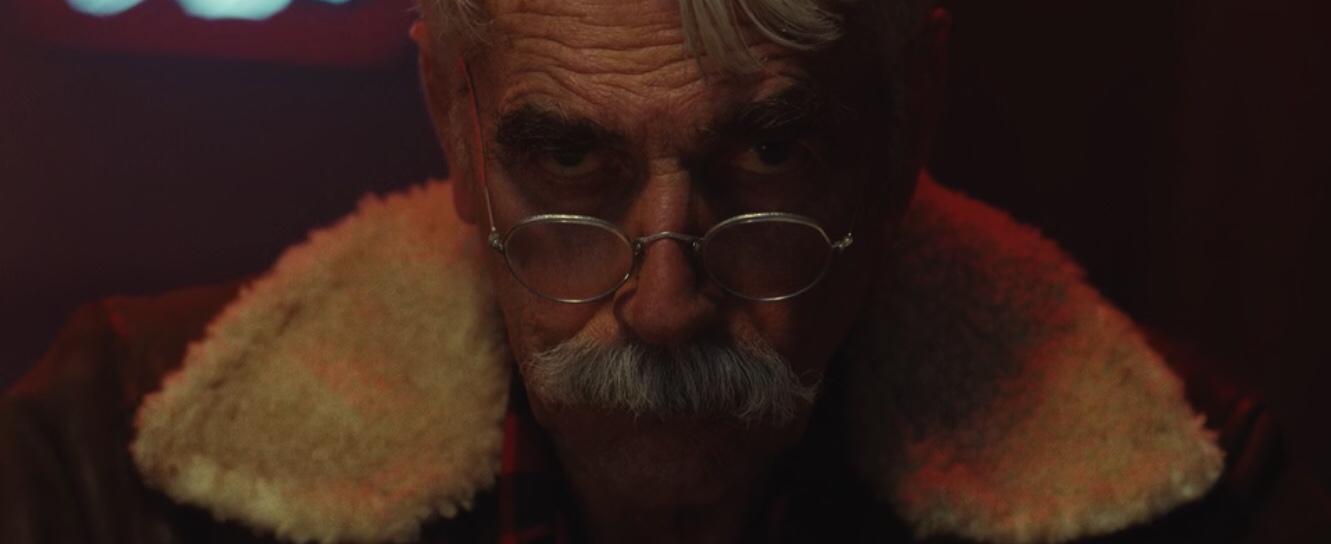The Man Who Killed Hitler and then The Bigfoot sounds like a movie straight out of the 1960s or 70s. It just screams goofy exploitation camp. Surprisingly, this is only partially true. Sam Elliott stars as Calvin, an old WWII veteran who holds a secret that haunts him every day. He is the man who assassinated Hitler. Although, it does not end there as the title makes obvious because he is then visited by the government to hunt down and execute Bigfoot.
The element that really helps this film is that it takes the subject matter seriously. Every single actor plays their roles straight-faced especially Sam Elliott and Aidan Turner who plays the former’s younger self. Elliott does an excellent job of portraying a quiet pain and presenting a sense lonely disconnect. Aidan Turner does well but he is really doing an impression of Elliott. Larry Miller is another major standout and plays Elliott’s brother. He brings so much sentimentality to the role and he and Elliott have profuse chemistry. They really feel like brothers who care for another but still have grown apart.
Aside from the strong performances, the movie just looks gorgeous. From the beginning, there is a whimsical quality that is apparent and remains throughout the movie. The colors are bright and contrast well with the background in a few scenes. There are some great artistic angles and some well-executed transitions. Although, there are a couple of times when the technique is a little off-putting. A large part of the film takes place in flashbacks and with some transitions, it feels like they just come out of nowhere. This ties into a larger problem which is the editing.
The movie is paced very unevenly. The first hour goes along pretty well and the flashbacks to the WWII are interesting. It is when the Bigfoot plot kicks in when the events get a little off-kilter. While the actors remain straight-faced, the Bigfoot segment is goofier and a suspension of disbelief is required. Not only is the story sillier, but the filmmaking becomes sloppy as well. Towards the end, it feels as though there are twenty minutes of the film that are missing and we just hard cut to an awkward action. There are also some spaces in between the scenes which cause flashes of black. This does not help the already awkward action scenes which involve frantically shaking the camera.
By the end, the movie just falls apart and it is only kept up by the wonderful performances. Some scenes feel underdeveloped while others seem neverending. The film lost direction after the Bigfoot plot and then tries to regain it but to no avail. In the final act, we are constantly jumping back and forth through time and by the conclusion, it feels as though we saw three endings.
The Man Who Killed Hitler and then The Bigfoot is like watching a figure skater make an astonishing entrance but then flounder towards the end. The performances are wonderful and there were some smart directorial decisions. It is just unfortunate that the film just lost its way.
The Man Who Killed Hitler and then The Bigfoot is one of many films being presented at Fantasia Fest 2018.











